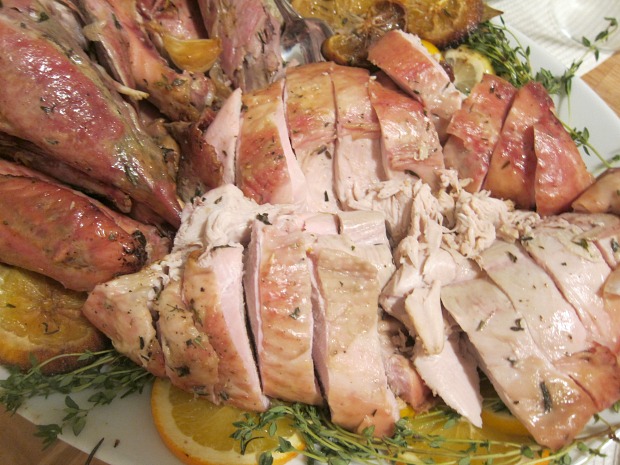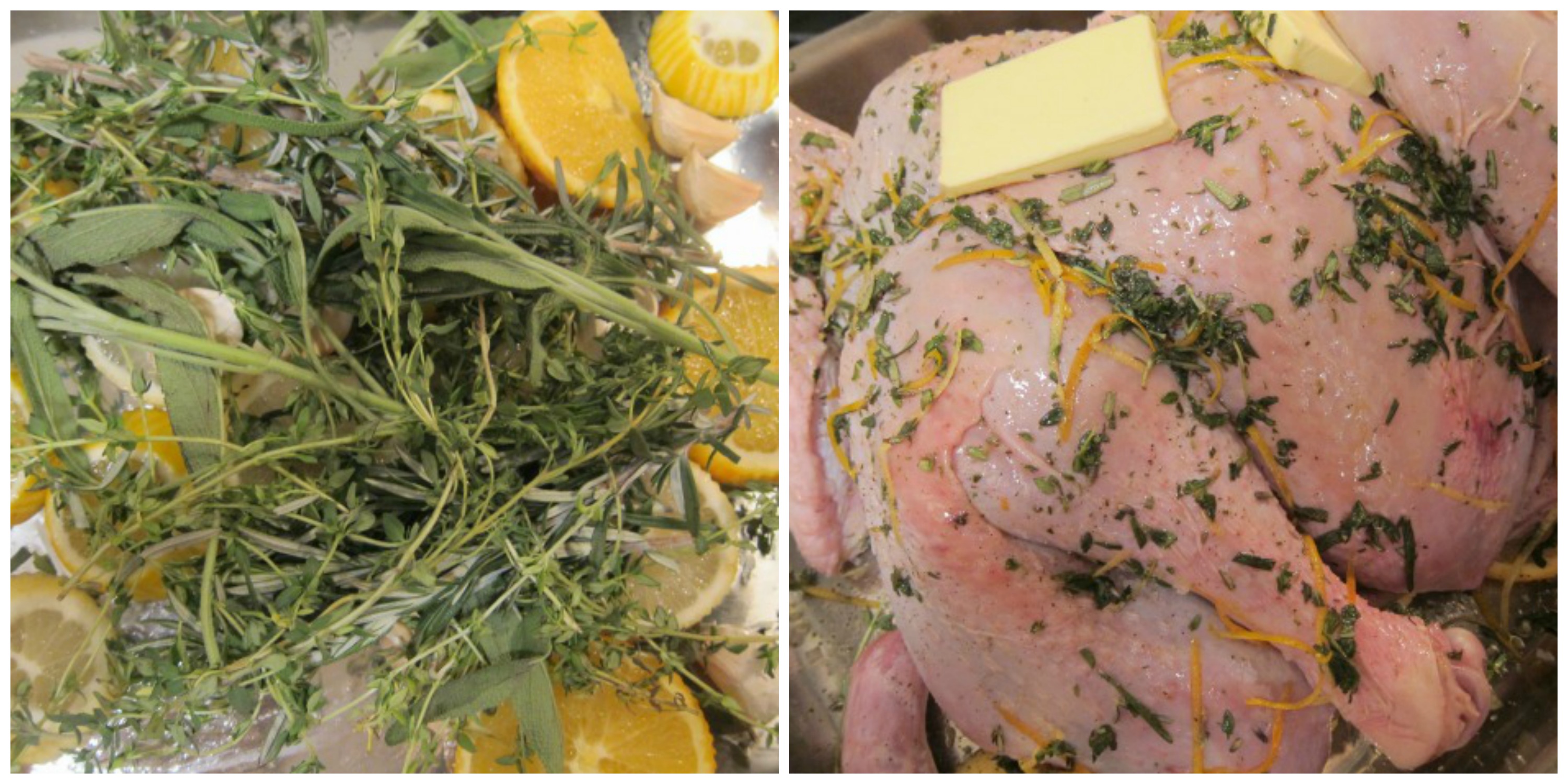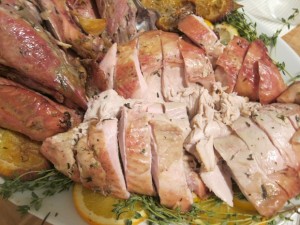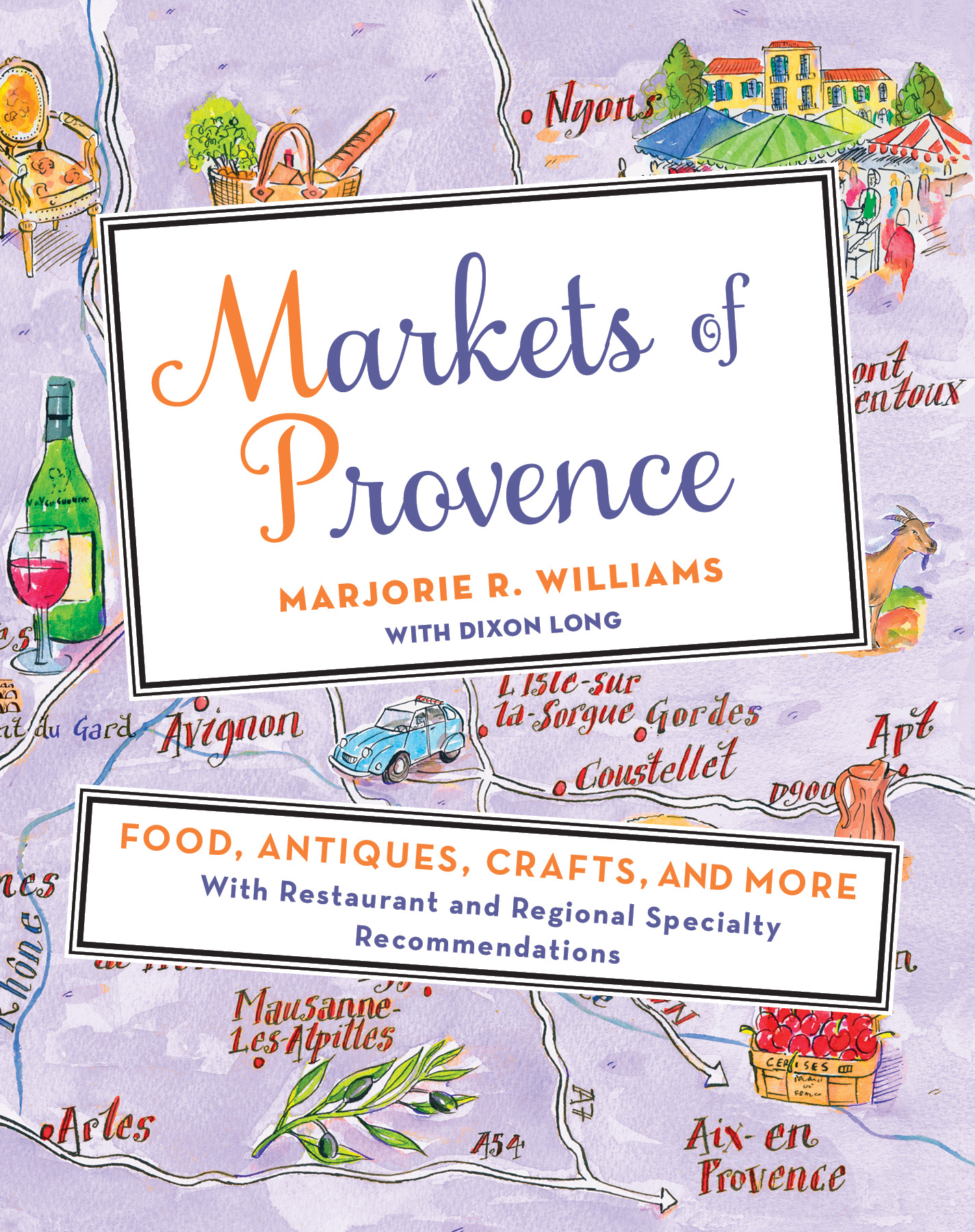 Every year we have our Franglais Thanksgiving–a mishmash of French and American culinary heritage at a very enthusiastic table. It’s not easy. The French among us think corn is for pigs and pumpkins inedible–unless the corn is very finely ground and then suddenly, bien sûr, cornbread is a must. The same holds true if the pumpkin pie is exceptionally good. Then, just this once, there will be an exception. So it is a tightrope I must walk every November–to get my Thanksgiving favorites on the table without offending anyone’s sensibilities (and secretly working to convert the skeptics–ahem, les français).
Every year we have our Franglais Thanksgiving–a mishmash of French and American culinary heritage at a very enthusiastic table. It’s not easy. The French among us think corn is for pigs and pumpkins inedible–unless the corn is very finely ground and then suddenly, bien sûr, cornbread is a must. The same holds true if the pumpkin pie is exceptionally good. Then, just this once, there will be an exception. So it is a tightrope I must walk every November–to get my Thanksgiving favorites on the table without offending anyone’s sensibilities (and secretly working to convert the skeptics–ahem, les français).
Tomorrow I will elaborate on what happened when I removed one Franco-American favorite from the menu this year, but first, the pièce de résistance. The Turkey. I am a huge fan of spatchcocking poultry–that is, taking the spine out, and cooking it flat, rather than in the round. I just feel that it cooks more evenly, more quickly, and with more flavor. So, this year, I personally spatchcocked my turkey. The turkey is a mighty beast, so if you have the opportunity to have your butcher do it, take it! I didn’t, and while it’s not impossible, I did have to call in a male relative.
This turkey is flavored with citrus and fresh herbes de Provence. I use Meyer lemon, lemon, and orange, and not only does the fruit lend the turkey much needed moisture in the oven, it also helps eliminate that slight gaminess that all poultry has. It really is so good. I also love to mix fresh and dried herbes de Provence. The fresh herbs almost smoke into the meat while it cooks, while the dried herbs form a crust on the skin. I throw in some garlic for good measure–whole cloves that roast until they’re soft and sweet, and we smear them on the meat while we eat it.
 It’s so easy, so good, so foolproof. Throw the citrus, herbs, and garlic in the roasting pan. Lay the flattened turkey on top. And cover with a quick rub made from more herbs–fresh and dry, the zest of the citrus, and some olive oil, and, bien sûr, butter. Three hours later, the turkey is moist, full of that Provençal flavor, and burnished gold. I then serve a quick Meyer lemon and thyme gravy on the side.
It’s so easy, so good, so foolproof. Throw the citrus, herbs, and garlic in the roasting pan. Lay the flattened turkey on top. And cover with a quick rub made from more herbs–fresh and dry, the zest of the citrus, and some olive oil, and, bien sûr, butter. Three hours later, the turkey is moist, full of that Provençal flavor, and burnished gold. I then serve a quick Meyer lemon and thyme gravy on the side.
Every year in our house, over a bowl of sweet potato chips and glasses of Champagne, we go around the circle and announce all that we are thankful for, and we toast each and every thing. I just want to say I am thankful for all of you who read French Revolution. I hope you have a marvelous Thanksgiving, full of much to be thankful for.
Bon app!
- 1 10-pound turkey, spatchcocked (have your butcher take out the spine and flatten the breastbone)
- 1 Meyer lemon, cut into wedges
- 1 lemon, cut into wedges
- 1 orange, cut into wedges
- 1 head garlic, cloves separated (leave them in their wrappers)
- 4 sprigs rosemary
- 1 bunch thyme
- 1/2 bunch sage
- 3- 4 fresh bay leaves
- Salt and pepper
- Zest of 1 Meyer lemon (use the zest from the fruit from the raft)
- Zest of 1 lemon
- Zest of 1 orange
- The leaves from 4 sprigs of rosemary, chopped
- 1/4 cup chopped thyme
- 12 sage leaves, chopped
- 1 teaspoon dried herbes de Provence
- 3 tablespoons olive oil
- 2 tablespoons cold, unsalted butter
- 2 tablespoons unsalted butter
- 2 tablespoons unbleached all-purpose flour
- The zest and juice of 1 Meyer lemon
- 2 tablespoons chopped thyme
- 2 cups turkey stock
- The drippings from the roast turkey
- Salt and pepper
Method
Preheat the oven to 400 degrees. Allow the turkey to come to room temperature. Zest the citrus, and set aside the zest for the rub, while cutting the fruit into wedges for the raft. Lightly grease the bottom of the roasting pan with olive oil. Then, in the bottom of your roasting pan, build the raft for the turkey—this will keep the turkey moist while also infusing it with flavor as it cooks. Scatter the cut up citrus, the garlic cloves, and the fresh herbs. Place the spatchcocked turkey breast-side-up over the raft in the pan. Salt and pepper the turkey, top and underside, liberally. Mix up the rub. Combine the zests of the citrus, the fresh and dried herbs, and the olive oil in a bowl. With your hands, rub the mixture all over the top of the turkey. Then, place 1 tablespoon of cold butter on each of turkey breast. Roast for a total of 3 hours, or until the internal temperature of the turkey is 160 degrees F and when the turkey is cut, the juices run clear. Cover with foil if the skin begins to darken too quickly (you will most likely have to after about 45 minutes) and baste as often as you can remember. Allow the turkey to sit for 20 minutes after it is cooked before you carve it. Make the gravy while the turkey rests. In a saucepan, melt the butter and whisk in the flour. Allow it to bubble on the stove for about 3 minutes, until it begins to turn golden. Stir in the lemon zest and juice and the thyme. You can add a glug of white wine at this point too, but that’s optional. Add the stock. Whisk and bring to a simmer, cooking on a simmer until thickened, about 10 minutes. Pour in the juices from the roast turkey pan. (NB: The reason I don’t make this gravy in the actual roasting pan is because the fruit causes the drippings to caramelize and burn. This way, we capture the flavor without turning the gravy acrid.) Serve alongside the turkey.print this recipe






I never thought to spatchcock my turkey for Thanksgiving. My family might think I am crazy, but it would be worth it to get the moistness and flavor you describe. Thank you for sharing your recipe!
It is the greatest thing! Once you carve it up, they won’t have any objections.